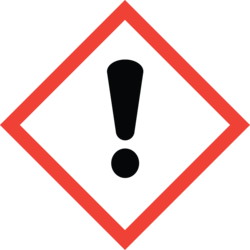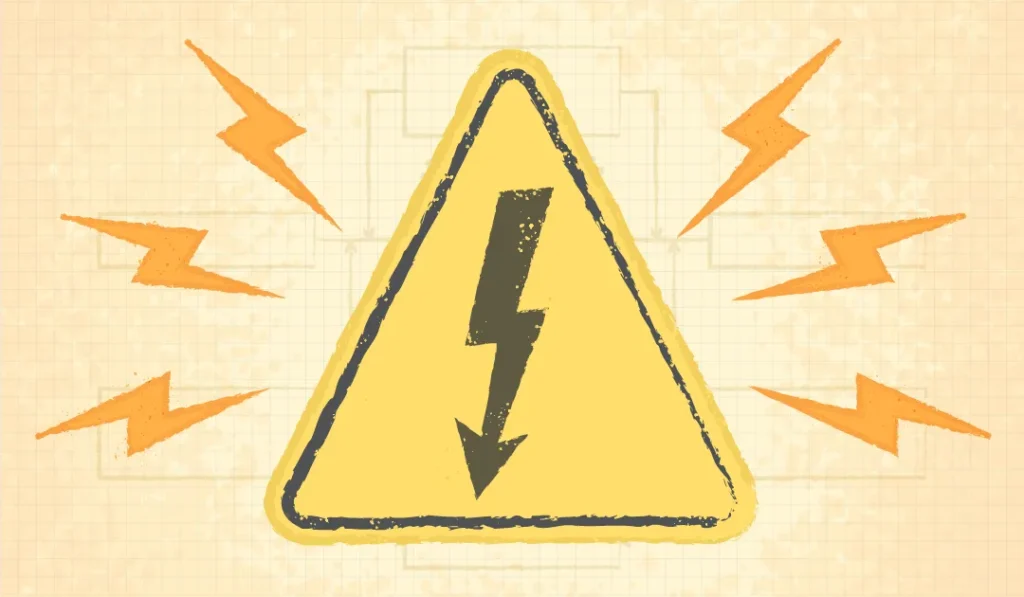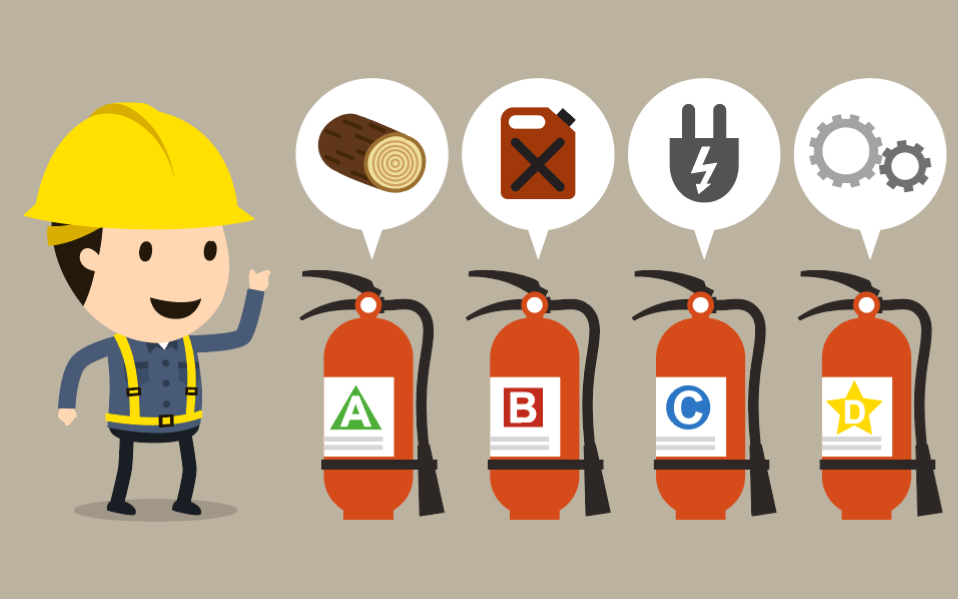Key Highlights
Workplace safety is crucial for the well-being of employees and the success of organizations.
- Safety quizzes are an effective way to assess knowledge and promote safety awareness.
This blog will provide 50 quiz questions covering various safety topics such as chemical safety, fire safety, and personal protective equipment.
- Each question will be followed by a brief explanation to enhance understanding.
- By taking this quiz, readers can evaluate their safety knowledge and identify areas for improvement.
- Safety quizzes play a vital role in continuous learning and promoting a culture of safety in the workplace.
Introduction
Promoting safety in the workplace is essential for protecting the well-being of employees and ensuring a productive work environment. To evaluate safety knowledge and raise awareness, organizations often conduct safety quizzes. These quizzes provide an opportunity for employees to test their understanding of safety practices, protective equipment, and correct responses in various scenarios.
This blog will present 15 safety quiz questions covering a wide range of topics related to workplace safety. These questions aim to assess knowledge on important safety practices and regulations, such as understanding the blue diamond symbol on chemical labels, decoding safety signs, and interpreting safety symbols.
By taking this quiz, readers will not only have a chance to evaluate their safety knowledge but also learn new terms and concepts related to national safety. Each question will be followed by a brief explanation to enhance understanding and provide further context.
Safety quizzes are not only valuable for assessing knowledge but also play a vital role in promoting a culture of safety in the workplace. They encourage employees to stay informed about safety practices, stay vigilant about potential hazards, and continuously improve their safety knowledge.
15 Questions to Evaluate Your Safety Knowledge

Now, let’s dive into the quiz questions that will evaluate your safety knowledge. These questions cover a wide range of topics, including safety practices, protective equipment, and correct responses in different scenarios. Each question will be followed by a brief explanation to provide further context and enhance understanding. Test your knowledge and see how well you fare in this comprehensive safety quiz.
Question 1: Understanding the Blue Diamond Symbol on Chemical Labels
Question: As per the Diamond Symbol on the chemical label, what does the blue color represent?
Answer: B. Health Hazard
Explanation: The blue diamond symbol on a chemical label represents the health hazard associated with the substance. This indicates that the chemical can cause harm to human health, such as irritation, respiratory problems, or even more severe effects. It is important to take proper precautions and use personal protective equipment when handling chemicals with this symbol to minimize the risk of health hazards.
Understanding the diamond symbols on chemical labels is crucial for chemical safety in the workplace. These symbols provide valuable information about potential hazards and guide users on how to handle and store chemicals safely. Additionally, it is essential to refer to Safety Data Sheets (SDS) for detailed information on specific chemicals, including their properties, hazards, and recommended safety measures.
Question 2: Interpreting Safety Signs
Question: What does this safety sign indicate?

Answer: A. Physical hazards
Explanation: This safety sign indicates the presence of physical hazards in the area. Physical hazards refer to any potential dangers or risks that can cause harm to a person’s physical well-being. This can include things like falling objects, slippery surfaces, electrical hazards, or any other physical conditions that could result in injury or damage. The sign serves as a warning to individuals to be cautious and take necessary precautions to avoid these hazards.
Interpreting safety signs is essential for promoting national safety and maintaining a safe work environment. These signs communicate important information about potential hazards, mandatory safety practices, and emergency procedures. By understanding and following safety signs, employees can reduce the risk of accidents and create a safer work environment for everyone.
Question 3: Decoding the Acronym NFPA
Question: What does the acronym “NFPA” stand for in the context of fire safety?
Answer: B. National Fire Protection Association
Explanation: The correct answer is the National Fire Protection Association. The NFPA is a global nonprofit organization dedicated to promoting fire safety and prevention. They develop and publish codes and standards for fire protection and provide training and education on fire safety practices. The NFPA’s guidelines help organizations and individuals ensure compliance with fire safety regulations, prevent fire incidents, and minimize the risk of property damage and personal injury.
Knowing and understanding the acronym NFPA is essential for individuals responsible for fire safety in the workplace. It highlights the importance of following fire safety standards and implementing preventive measures to protect lives and property. By adhering to NFPA guidelines and regulations, organizations can create a safer work environment and reduce the risk of fire-related incidents.
Question 4: Components of a Personal Fall Arrest System
Question: What are the three components of a Personal Fall Arrest System?
Answer:
- Anchor/Anchorage Connector
- Body Wear (Harness)
- Connecting Device (Lanyard or Retractable)
Explanation: The three components of a Personal Fall Arrest System are the Anchor/Anchorage Connector, Body Wear (Harness), and Connecting Device (Lanyard or Retractable). These components are essential for ensuring the safety of individuals working at heights.
The Anchor/Anchorage Connector provides a secure point of attachment, typically to a fixed structure or anchorage point. The Body Wear (Harness) is worn by the worker and is designed to distribute the forces of a fall across the body, reducing the risk of injury. The Connecting Device (Lanyard or Retractable) connects the harness to the anchor point, allowing for movement while still providing fall protection.
When working at heights, it is crucial to use a Personal Fall Arrest System to prevent falls and protect against potential injuries. By ensuring the correct use and maintenance of these components, workers can minimize the risk of accidents and work safely in elevated areas.
Question 5: Explain the Fire Extinguisher Acronym PASS
Question: The acronym for putting out a fire using a fire extinguisher is PASS. What does PASS stand for?
Answer: C. Pull Aim Squeeze Sweep
Explanation: The correct answer is “Pull Aim Squeeze Sweep.” This acronym represents the four steps to effectively use a fire extinguisher. It is a simple and memorable guide to follow in case of a fire emergency.
- Pull: Pull the pin to break the tamper seal and prepare the extinguisher for use.
- Aim: Aim the nozzle at the base of the fire, directing the extinguishing agent where it is needed most.
- Squeeze: Squeeze the handle to release the extinguishing agent, allowing it to flow onto the fire.
- Sweep: Sweep the nozzle from side to side, covering the fire area until it is completely extinguished.
Knowing how to use a fire extinguisher correctly is vital for fire safety in the workplace. By following the PASS method, individuals can take prompt action to suppress small fires, prevent their spread, and potentially save lives and property.
Question 6: Tagging Messages on Damaged Electric Tools
Question: What messages must you tag on damaged portable electric tools?
Answer: A. Do not use
Explanation: The correct answer is “Do not use.” This message must be tagged on damaged portable electric tools to inform users that they should not use the tool due to the potential risks and hazards it may pose. It serves as a precautionary measure to ensure the safety of individuals and prevent any accidents or electrical mishaps.
Tagging messages on damaged electric tools is a crucial practice in electrical safety. It helps identify and isolate hazardous equipment, ensuring that employees are aware of potential dangers. By following proper tagging procedures, organizations can prevent accidents, protect employees from harm, and maintain a safe working environment.
Question 7: Interpreting Safety Symbols
Question: What does the following safety symbol indicate?

Answer: A. Potentially harmful chemical, generally an irritant
Explanation: The symbol represents a potentially harmful chemical that is usually an irritant. It serves as a warning to indicate that the chemical may cause harm or irritation to individuals who come into contact with it. This symbol is commonly used to alert people to be cautious and take necessary precautions when handling or being exposed to such chemicals.
Interpreting safety symbols is essential for hazard awareness and protective measures in the workplace. These symbols provide valuable information about potential hazards and guide users on how to handle and store hazardous substances safely. By understanding and adhering to safety symbols, employees can prevent accidents, minimize risks, and protect their health and well-being.
Question 8: Rules regarding Suspended Loads
Question: What are the rules regarding suspended loads?
Answer: A. Never leave a suspended load unattended
B. Never travel with a suspended load over a person
Explanation: The first rule is to never leave a suspended load unattended. Leaving a suspended load unattended can be extremely dangerous, as it can lead to accidents and injuries. A suspended load can become unstable or shift unexpectedly, causing it to fall and potentially harm anyone nearby. By staying with the load and ensuring its stability, the risk of accidents can be minimized.
The second rule is to never travel with a suspended load over a person. Traveling with a suspended load over a person can be extremely dangerous and can cause serious injury or even death. The weight of the load combined with any potential movement or instability can result in the load falling and directly impacting the person below. To ensure safety, it is important to never travel with a suspended load over a person and to always follow proper lifting and carrying procedures.
Following these rules regarding suspended loads is essential for maintaining a safe work environment. By adhering to these guidelines, organizations can prevent accidents, protect employees, and promote a culture of safety.
Question 9: The Link between Ergonomics Hazards and MSDs
Question: What is the link between ergonomics hazards and Musculoskeletal Disorders (MSDs)?
Answer: D. All of the above
Explanation: Musculoskeletal Disorders (MSDs) are mainly caused by ergonomics hazards, which include repetition, high force, and awkward postures. Repetitive movements can strain the muscles and tendons, leading to MSDs. High force exerted on the body can cause excessive stress on the musculoskeletal system, leading to injuries and disorders. Awkward postures, such as bending, twisting, or reaching, can put additional strain on the body and increase the risk of developing MSDs. Therefore, all of these factors contribute to the development of MSDs.
Understanding the link between ergonomics hazards and MSDs is crucial for promoting worker health and job satisfaction. Employers should prioritize ergonomic design and provide appropriate training to minimize the risk of MSDs. By addressing ergonomics hazards, organizations can create a safer and more comfortable work environment, enhance productivity, and improve employee satisfaction.
Question 10: Type of Extinguishing Media for Class ‘D’ Fire
Question: What type of extinguishing media is suitable for a Class ‘D’ fire?
Answer:
- Ternary Eutectic Chloride (TEC)
Explanation: Ternary Eutectic Chloride (TEC) is the correct answer for extinguishing Class D fires. Class D fires involve combustible metals such as magnesium, titanium, and sodium. TEC is specifically designed to extinguish these types of fires by smothering the flames and preventing oxygen from reaching the combustible metal. Water, foam spray, CO2, clean agent, and ABC powder are typically used for other classes of fires and may not be effective or safe for Class D fires.
Knowing the appropriate extinguishing media for different classes of fires is essential for effective firefighting. Using the wrong type of extinguishing media can worsen the situation and potentially cause more harm. By following proper fire safety protocols and using the correct extinguishing media, organizations can effectively combat fires and minimize the risk of property damage and injuries.
| Class of Fire | Extinguishing Media |
| Class A | Water, foam spray, CO2, dry chemical |
| Class B | CO2, foam, dry chemical, clean agent |
| Class C | CO2, dry chemical, clean agent |
| Class D | Ternary Eutectic Chloride (TEC) |
Continuation of the Safety Quiz Questions
Continuing with the safety quiz questions, let’s test your knowledge on topics like first aid, protective equipment, and safety data sheets. These questions will cover important aspects of workplace safety and provide insights into best practices and regulations. Remember to read the explanations after each question to enhance your understanding and broaden your safety knowledge.
Question 11: Understanding MSDS Information Distribution
Question: In how many sections is the information provided in a Material Safety Data Sheet (MSDS) distributed?
Answer: D. 16
Explanation: The information provided in a Material Safety Data Sheet (MSDS) is distributed in 16 sections. The MSDS is a document that provides important safety information about a particular substance or product. These sections typically include information about the product’s composition, physical and chemical properties, potential hazards, handling and storage recommendations, emergency measures, and more. The 16 sections ensure that all relevant safety information is provided to users, helping them understand and mitigate potential risks associated with the substance or product.
Understanding how information is distributed in an MSDS is critical for chemical safety in the workplace. By referring to MSDSs and following the information provided, employees can ensure safe handling, storage, and use of hazardous substances, ultimately preventing accidents and protecting their health and well-being.
Question 12: Mobile Policy Sign Interpretation
Question: What does this sign indicate according to the mobile policy?

Answer: A. Cell phone Restricted zone
Explanation: This sign indicates that the area is a restricted zone for cell phone usage according to the mobile policy. Cell phone usage can pose risks and distractions in certain areas, compromising safety or interfering with the operation of sensitive equipment. By clearly signifying restricted zones, organizations can enforce mobile policies and maintain a safe work environment.
Interpreting safety signs, including mobile policy signs, is vital for preventing accidents and promoting compliance with safety regulations. These signs communicate important information, guidelines, and restrictions to employees and visitors, ensuring that everyone understands and follows the necessary safety protocols. By adhering to mobile policies, individuals can minimize distractions and potential risks, contributing to a safe and focused work environment.
Question 13: Meaning of CPR in First Aid
Question: What is the meaning of CPR in the context of first aid?
Answer: A. Cardio Pulmonary Resuscitation
Explanation: CPR stands for Cardio Pulmonary Resuscitation. It is a life-saving technique used in first aid to revive a person who is in cardiac arrest. CPR involves a combination of chest compressions and rescue breaths to maintain blood circulation and oxygen supply to the vital organs until advanced medical help arrives.
Knowing how to perform CPR correctly is essential for handling emergency situations and potentially saving lives. By promptly initiating CPR, individuals can provide immediate assistance to a person experiencing cardiac arrest and increase the chances of a successful resuscitation. Organizations should prioritize CPR training and ensure that employees have the necessary skills to respond effectively in emergencies.
Question 14: Indications of Hand-Held Electric Equipment Symbols
Question: What is the meaning of this symbol on hand-held electric equipment?

Answer: A. Double insulation
Explanation: This symbol indicates that the hand-held electric equipment has double insulation. Double insulation is a safety feature where the equipment has an extra layer of insulation to protect against electric shock. This symbol is often found on electrical devices that do not require grounding. It indicates that the equipment is designed to provide an additional layer of protection for the user.
Understanding the indications of symbols on hand-held electric equipment is essential for electrical safety in the workplace. These symbols provide valuable information about the safety features and characteristics of the equipment, allowing users to make informed decisions about their usage and ensure their safety. By using properly insulated equipment, individuals can minimize the risk of electric shock and work safely with electrical devices.

Question 15: Different Classes of Fire Extinguishers
Question: What are the different classes of fire extinguishers?
Answer: A. Class A, Class B, Class C, Class D
Explanation: Fire extinguishers are classified into different classes based on the types of fires they are designed to extinguish.
- Class A: Designed for fires involving ordinary combustible materials such as wood, paper, and textiles.
- Class B: Designed for fires involving flammable liquids or gases such as gasoline, oil, and propane.
- Class C: Designed for fires involving energized electrical equipment such as electrical panels, motors, and appliances.
- Class D: Designed for fires involving combustible metals such as magnesium, titanium, and sodium.
Each class of fire extinguisher is specifically suited to combat the respective type of fire, ensuring effective suppression and minimizing the risk of fire spread. It is essential to have the appropriate class of fire extinguisher readily available in the workplace and to understand their proper usage to respond quickly and safely in fire emergencies.
Quiz Answers and Explanations
Congratulations on completing the safety quiz! Here are the answers and explanations to evaluate your performance and enhance your safety knowledge. Review the correct answers and explanations provided to gain a better understanding of workplace safety practices, regulations, and hazard management. Continuous learning and staying updated on safety practices are crucial for ensuring a safe and secure work environment.
Frequently Asked Questions
How to Make Safety Training Interesting?
Answer: To make safety training interesting, organizations can incorporate interactive elements, such as quizzes, case studies, and group discussions. Engaging employees through hands-on activities and real-life examples enhances participation, knowledge retention, and overall job satisfaction. Providing a positive and interactive learning environment fosters engagement and promotes a culture of safety in the workplace.
What is the Importance of Safety Quizzes?
Answer: Safety quizzes play a crucial role in assessing knowledge, raising awareness, and promoting continuous learning in the context of workplace safety. By testing employees’ understanding of safety practices, hazard awareness, and regulations, organizations can identify gaps in knowledge and provide targeted training to enhance safety practices. Safety quizzes contribute to a culture of continuous learning and improvement, ensuring a safe working environment for all.
What are the Common Safety Hazards in the Workplace?
Answer: Common safety hazards in the workplace can include slips and falls, ergonomic hazards, electrical hazards, chemical exposures, and fire hazards. These hazards pose risks to employee health and safety and can result in injuries, illnesses, and property damage. By identifying and managing these hazards through risk assessments, organizations can mitigate potential risks and create a safer work environment in compliance with OSHA regulations.
In conclusion, workplace safety is of utmost importance for both employees and organizations. Safety quizzes provide an effective way to assess knowledge, raise awareness, and promote a culture of safety in the workplace. By evaluating their safety knowledge through quizzes, employees can identify areas for improvement and continuously enhance their safety practices. Safety quizzes play a vital role in knowledge assessment, hazard awareness, and continuous learning, contributing to a safer work environment for all.













